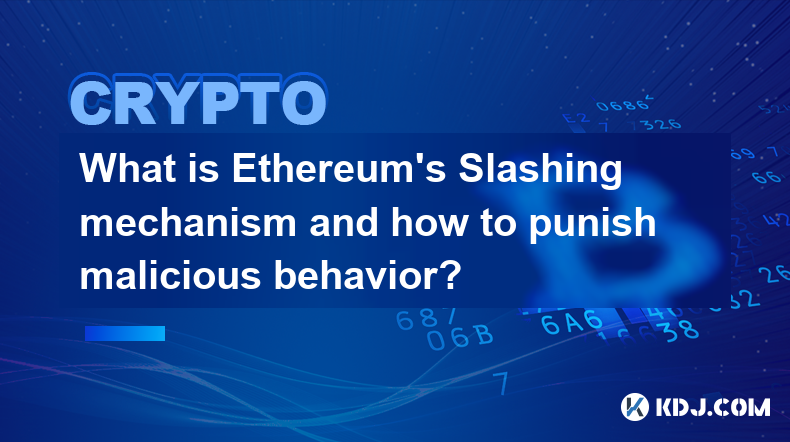-
 Bitcoin
Bitcoin $96,967.1185
-0.97% -
 Ethereum
Ethereum $2,671.8672
-2.29% -
 XRP
XRP $2.5695
-4.76% -
 Tether USDt
Tether USDt $1.0002
0.01% -
 BNB
BNB $645.6047
-1.25% -
 Solana
Solana $171.2167
-1.05% -
 USDC
USDC $1.0000
0.01% -
 Dogecoin
Dogecoin $0.2462
-2.20% -
 Cardano
Cardano $0.7733
-3.19% -
 TRON
TRON $0.2391
-2.12% -
 Chainlink
Chainlink $17.7376
-2.28% -
 Sui
Sui $3.3727
-1.65% -
 Avalanche
Avalanche $24.6569
-0.32% -
 Stellar
Stellar $0.3296
-5.06% -
 Litecoin
Litecoin $130.0046
2.52% -
 Toncoin
Toncoin $3.6504
1.46% -
 Shiba Inu
Shiba Inu $0.0...01532
-0.97% -
 UNUS SED LEO
UNUS SED LEO $9.6755
-0.52% -
 Hedera
Hedera $0.2125
-2.94% -
 Hyperliquid
Hyperliquid $24.8232
0.91% -
 Polkadot
Polkadot $5.1674
3.43% -
 MANTRA
MANTRA $7.5034
-0.01% -
 Bitcoin Cash
Bitcoin Cash $320.8281
-0.64% -
 Ethena USDe
Ethena USDe $0.9978
-0.18% -
 Bitget Token
Bitget Token $4.7462
4.95% -
 Uniswap
Uniswap $8.9431
-4.59% -
 Dai
Dai $0.9997
-0.07% -
 Monero
Monero $228.7110
-0.47% -
 NEAR Protocol
NEAR Protocol $3.3985
0.84% -
 Pepe
Pepe $0.0...09371
-0.86%
How to ensure the security of Ethereum and what are the common attack methods?
Ethereum security requires diligent wallet management, awareness of attack vectors, and proactive measures against phishing, leveraging the network's security protocols, and implementing comprehensive smart contract security audits.
Feb 20, 2025 at 01:30 am

Key Points:
- Secure Ethereum Wallet Best Practices
- Common Attack Vectors in Ethereum Blockchain
- Preventive Measures against Phishing Attacks
- Ethereum's Security Model and Protocol Overview
- Smart Contract Security Audits and Code Review
How to Ensure the Security of Ethereum
Step 1: Practice Secure Wallet Management
- Utilize hardware wallets or trusted software wallets for storing private keys offline.
- Generate strong and unique passwords, and consider using a password manager.
- Implement two-factor authentication (2FA) mechanisms for added account security.
- Refrain from sharing wallet credentials or facilitating transactions with unknown individuals.
Step 2: Understand Common Attack Vectors
Phishing Scams:
- Recognize and be cautious of malicious emails or websites requesting sensitive information.
- Confirm the legitimacy of official platforms and transactions before providing personal data.
- Use anti-phishing extensions or tools to protect against fraudulent attempts.
Social Engineering Attacks:
- Be wary of suspicious requests or communications from individuals claiming to be exchange support or blockchain experts.
- Verify identities and ensure authenticity before providing sensitive information or making transactions.
Malware Threats:
- Install reputable antivirus and anti-malware programs to prevent malicious software from compromising devices.
- Exercise caution when clicking links or downloading attachments from unknown sources.
Step 3: Prevent Phishing Attacks
- Be vigilant of suspicious emails or website addresses that mimic legitimate platforms.
- Verify the sender's email address and the website's URL before proceeding with login attempts or transactions.
- Use browser extensions or plugins that provide anti-phishing protection.
Step 4: Utilize the Ethereum Security Model and Protocols
- Understand the Ethereum blockchain's security features, including Proof-of-Work consensus and smart contract immutability.
- Acknowledge the role of the Ethereum Foundation and community in maintaining network security.
- Stay informed about software updates and security measures implemented by Ethereum developers.
Step 5: Conduct Smart Contract Security Audits
- Engage reputable security auditors to assess smart contract code for vulnerabilities.
- Implement rigorous code review practices to identify and address any potential security flaws.
- Utilize automated code analyzers and unit testing to enhance contract resilience.
Frequently Asked Questions
Q: What is Ethereum's security model?
A: Ethereum employs a Proof-of-Work consensus mechanism to validate transactions and secure the blockchain. The network relies on miners who solve complex cryptographic puzzles to prevent malicious activity and ensure integrity.
Q: What common measures can I take to protect my Ethereum wallet?
A: Utilize hardware or reputable software wallets, implement 2FA, generate strong passwords, and avoid sharing wallet information or engaging with untrustworthy individuals.
Q: How can I prevent phishing attacks?
A: Be cautious of suspicious emails or website addresses, verify sender identities, use anti-phishing tools, and refrain from clicking unknown links or downloading attachments.
Q: What is smart contract security?
A: Smart contract security involves auditing and reviewing smart contract code to identify and mitigate vulnerabilities that could lead to financial or security breaches.
Disclaimer:info@kdj.com
The information provided is not trading advice. kdj.com does not assume any responsibility for any investments made based on the information provided in this article. Cryptocurrencies are highly volatile and it is highly recommended that you invest with caution after thorough research!
If you believe that the content used on this website infringes your copyright, please contact us immediately (info@kdj.com) and we will delete it promptly.
- Ethereum (ETH) vs. IntelMarkets (INTL): Can This New AI-Based Crypto Disrupt the ETH Price in Q2 2025?
- 2025-02-22 01:35:24
- Kanye West's YZY Token May Be Coming This Month, Polymarket Bettors Wager $11M
- 2025-02-22 01:35:24
- Ethereum (ETH) Price Shows Stronger Momentum Than Bitcoin (BTC)
- 2025-02-22 01:35:24
- Pi Network Crashes 50% After Mainnet Launch, Top Rivals to Consider
- 2025-02-22 01:35:24
- Bitcoin Pepe: The 'ETH Killer' Nobody Saw Coming
- 2025-02-22 01:35:24
- XRP May Have a New Catalyst That Could Push Its Price Higher Following the Ongoing Consolidation Phase
- 2025-02-22 01:35:24
Related knowledge

What is Ethereum’s Slashing mechanism and how to punish malicious behavior?
Feb 20,2025 at 03:08am
Key PointsOverview of slashingDifferent types of slashing in EthereumIncentives and consequences of slashingIdentifying and reporting slashed validatorsOngoing discussions and potential improvementsEthereum's Slashing Mechanism: Punishing Malicious BehaviorEthereum's slashing mechanism is an essential tool for ensuring network security and punishing mal...

What is the verifier node of Ethereum and how to become a verifier?
Feb 19,2025 at 06:00pm
The Verifier Node of Ethereum: A Comprehensive GuideKey Points:What is a Verifier Node?How to Become a Verifier NodeResponsibilities and Rewards of a Verifier NodeMinimum Requirements for Becoming a Verifier NodePotential Difficulties in Running a Verifier Node1. What is a Verifier Node?A Verifier Node is an independent entity on the Ethereum network th...

What is Ethereum’s staking, and how to participate and earn money?
Feb 19,2025 at 04:37pm
Key Points:Understanding Ethereum's Staking MechanismSteps to Participate in StakingBenefits and Rewards of StakingSecurity and Risk ConsiderationsTechnical Requirements and Hardware OptionsPotential Challenges and Troubleshooting TipsFAQs on Ethereum StakingWhat is Ethereum's Staking?Proof-of-Stake (PoS) is a consensus mechanism used in blockchain netw...

What is Ethereum’s DAO (Decentralized Autonomous Organization) and how does it work?
Feb 20,2025 at 03:12am
Key PointsDefinition and Structure of a DAOGovernance and Decision-Making in DAOsBenefits and Use Cases of DAOsChallenges and Limitations of DAOsWhat is Ethereum's DAO (Decentralized Autonomous Organization) and How Does It Work?Definition and Structure of a DAOA Decentralized Autonomous Organization (DAO) is an innovative governance and management fram...

What is Ethereum's multi-signature wallet and how to improve security?
Feb 20,2025 at 02:18pm
Key Points:Understanding the Concept of a Multi-Signature WalletBenefits and Drawbacks of Multisig WalletsRequirements for Setting Up a Multisig WalletStep-by-Step Guide to Generating a Multisig WalletImplementing Strategies for Enhanced Security1. Understanding the Concept of a Multi-Signature WalletA multi-signature (multisig) wallet in the Ethereum e...

What is Ethereum's oracle and how to provide data for smart contracts?
Feb 21,2025 at 01:30am
Key Points:Understanding the concept of oracles in EthereumExploring different types of oraclesDetailed guide on how to provide data for smart contractsAddressing potential challenges and considerationsWhat is Ethereum's Oracle?Oracles are crucial components in the Ethereum ecosystem, enabling smart contracts to access real-world data and off-chain even...

What is Ethereum’s Slashing mechanism and how to punish malicious behavior?
Feb 20,2025 at 03:08am
Key PointsOverview of slashingDifferent types of slashing in EthereumIncentives and consequences of slashingIdentifying and reporting slashed validatorsOngoing discussions and potential improvementsEthereum's Slashing Mechanism: Punishing Malicious BehaviorEthereum's slashing mechanism is an essential tool for ensuring network security and punishing mal...

What is the verifier node of Ethereum and how to become a verifier?
Feb 19,2025 at 06:00pm
The Verifier Node of Ethereum: A Comprehensive GuideKey Points:What is a Verifier Node?How to Become a Verifier NodeResponsibilities and Rewards of a Verifier NodeMinimum Requirements for Becoming a Verifier NodePotential Difficulties in Running a Verifier Node1. What is a Verifier Node?A Verifier Node is an independent entity on the Ethereum network th...

What is Ethereum’s staking, and how to participate and earn money?
Feb 19,2025 at 04:37pm
Key Points:Understanding Ethereum's Staking MechanismSteps to Participate in StakingBenefits and Rewards of StakingSecurity and Risk ConsiderationsTechnical Requirements and Hardware OptionsPotential Challenges and Troubleshooting TipsFAQs on Ethereum StakingWhat is Ethereum's Staking?Proof-of-Stake (PoS) is a consensus mechanism used in blockchain netw...

What is Ethereum’s DAO (Decentralized Autonomous Organization) and how does it work?
Feb 20,2025 at 03:12am
Key PointsDefinition and Structure of a DAOGovernance and Decision-Making in DAOsBenefits and Use Cases of DAOsChallenges and Limitations of DAOsWhat is Ethereum's DAO (Decentralized Autonomous Organization) and How Does It Work?Definition and Structure of a DAOA Decentralized Autonomous Organization (DAO) is an innovative governance and management fram...

What is Ethereum's multi-signature wallet and how to improve security?
Feb 20,2025 at 02:18pm
Key Points:Understanding the Concept of a Multi-Signature WalletBenefits and Drawbacks of Multisig WalletsRequirements for Setting Up a Multisig WalletStep-by-Step Guide to Generating a Multisig WalletImplementing Strategies for Enhanced Security1. Understanding the Concept of a Multi-Signature WalletA multi-signature (multisig) wallet in the Ethereum e...

What is Ethereum's oracle and how to provide data for smart contracts?
Feb 21,2025 at 01:30am
Key Points:Understanding the concept of oracles in EthereumExploring different types of oraclesDetailed guide on how to provide data for smart contractsAddressing potential challenges and considerationsWhat is Ethereum's Oracle?Oracles are crucial components in the Ethereum ecosystem, enabling smart contracts to access real-world data and off-chain even...
See all articles





















































































